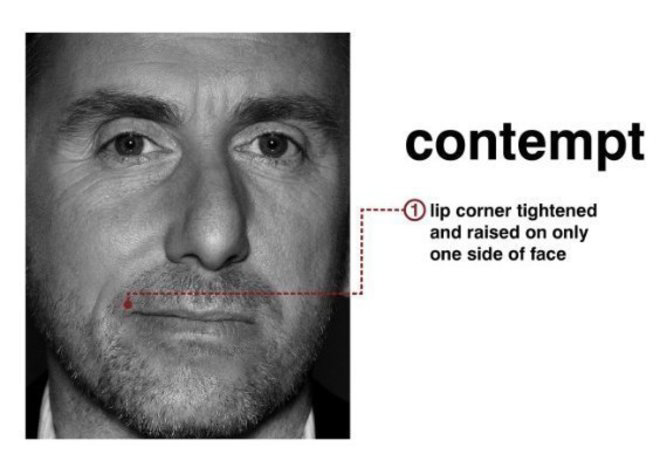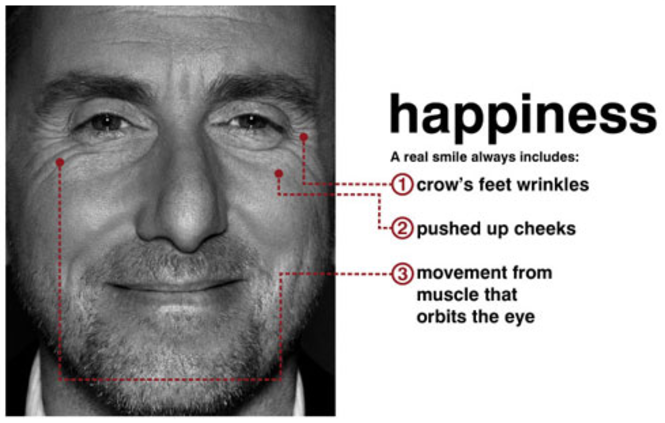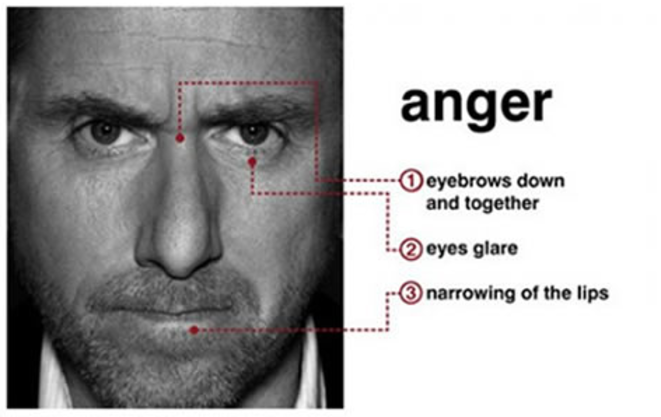As a student of Public Health, I was required to understand some of the most effective ways of imparting health education to the public. Understandably, ‘communication’ came under my study. My lecturer explained the varied forms of verbal and non-communication and to some unusual laughter in the classroom, comically demonstrated some forms of body language that regularly comes up in the teacher-student parlance. What she left out, and what she probably could not demonstrate so effectively, was the concept of ‘micro gestures’ or micro expressions.
These, unlike the rest, last for a fraction of a second, nearly a part of a quarter of a second. As a result, it is barely noticed by most. I would not find blame with my teacher for omitting this part out of her lecture because these expressions come out subconsciously, when some of the emotions we are trying to conceal get ‘leaked’.
At one stage or other, we all have had the experience of trying to hide our worries but being found out by some friend or relative, most usually our mother. Chances are that some of our micro gestures has let on our secret to these people, who are sensitive to our feelings. Micro gestures are the reasons why some of us can tell whether the new boss is out to screw them at work, or if the teacher is ‘really’ concerned about a student.
If a teacher’s glance frequently sweeps over one student, most would feel that the teacher is paying particular attention to that pupil. But a nonchalant glance is an indication of no such thing, although it would be hard to discern this emotion. In fact, most people in a room would not be able to read micro expressions. For instance, teachers often fail to identify introvert students who are interested but are unable to express themselves.
Perhaps, that is also why some students can tell if they are being tacitly targeted in class while others don’t find any reasons to support their suspicions. As a child, I always saw my English teacher making faces at my essays although admittedly, hers was not always a ‘micro’ expression. The interesting part is that these expressions cannot be faked, a fact that salesman, in particular, are well aware of and spot expertly.
He found that a smile is perhaps the best teaching tool and also an alternative to ‘correcting misbehavior without chiding’. Standing still while giving instructions has a better impact on students, though he fervently believes that ‘a teacher’s control should be an exercise in purpose, not in power.
While the study of micro gestures has its uses in the detection of lies during criminal interrogations, some like Patryk and KasiaWezowski, founders of Centre for Body Language, apply it to predict success. Successful leaders, according to them, can spot and empower micro expressions and elicit the same in others. It is well known that a smile denotes friendliness and a casual eye contact, confidence. On the other hand, pursed lips, a wrinkled nose and rolling eyes would mean dislike or disagreement, and high nose or a smirk would signify contempt or haughtiness.
The reason why these cannot be faked is that the emotional part of the brain is stronger than the rest and despite our attempts to subdue our feelings, it leaks out. Though barely conspicuous, these are referred to as ‘road signs’ that help ‘direct our conversation’. In their research, Patryk and KasiaWezowski compare two subjects from different countries. The Japanese stands out for their diplomacy, who on a stimulus of disgust ‘hide negative emotions’ under a smile while their counterparts don’t mind revealing the obvious. To the Japanese, the latter amounts to a somewhat juvenile behavior. Our daily encounters with others at home or work can enlighten us on positive and negative micro expressions. It has been rightly said that to smile at others is a gift, that can make one’s day or turn it upside down, in a good way that is, even if the smile is from a total stranger.
It radiates a positive mood and has the same impact on the receiver. As Santha Johns suggest, it is so much easier and natural to smile! An honest smile, however, requires the equal faculty of the eyes and the lips. One side of the lips raised is an extremely negative sign which, though it doesn’t necessarily mean deception, help us tell an all-weather friend from a fair-weather friend. A lying friend is easily caught when they don’t make eye contact. Even in other cases, twitch of a muscle or in-congruence in speech and body language can help detect a lie.
While many experts host workshops on decoding body language, there was only one who caught my fancy. He is not an expert in body language, but he put his knowledge of the subject to the best possible use. Lemov is an American teacher-turned-writer who ‘wrote Britain’s latest teaching bible.’ The first of its kind, his book Teach like a Champion has begun to make waves throughout the world. Some have made it a part of their teachers training program while others at school circulate copies among their staff. While attempts to improve education aims only on raising grades, Lemov worked on making teaching itself better and in turn, assuring a proper learning atmosphere. He doesn’t judge teachers on their methodology or disciplinary actions or even their years of experience. I can’t help but recall the words of Dylan William who professed, “’People make claims about having 20 years’ experience, but they really just have one year’s experience repeated 20 times.” William was an advocate of improving teacher skills instead of frittering money on grandiose educational projects to improve student performance.
Similarly, what Lemov was looking for were teachers with an insight into student learning even if they were just beginners. He and his team study teachers through video tape and slow them down at places to notice micro gestures by both teachers and students. They learn that good teaching, although seemingly very natural, ‘is a skill as specialized, intricate and learnable as playing a guitar’, where every gesture is practiced a number of times and is indeed ‘a deliberate technique in disguise’. For instance, he found that a smile is perhaps the best teaching tool and also an alternative to ‘correcting misbehavior without chiding’. Standing still while giving instructions has a better impact on students, though he fervently believes that ‘a teacher’s control should be an exercise in purpose, not in power.’ One can learn more from Elizabeth Green’s ‘Building a Better Teacher‘, published in New York Times magazine.
In an intriguing article for The Guardian, Ian Leslie remarked that Lemov’s fascinating observation of teachers gave voice to the many woes of learning in class. He paid attention to how some teachers smile throughout the lesson creating a comfortable atmosphere, and spread warmth among their students. The tone of the voice is equally vital to keep students engaged. Asking questions is a usual tactic used by teachers but he notes that ‘average time a teacher leaves between question and answer is 1.5 seconds. That is not enough.’ Not enough for all students to raise their hand in response to the questions because the shier ones take more time. As an example, he shows how a teacher waits after asking a question, and ‘uses her ‘wait-time’ walking slowly across the front of the classroom, smiling, her gaze criss-crossing the class, as more and more hands spring up’. It may seem like nit-picking, but teaching is an art that very few excel at or even perhaps bother to learn.
If we were to look at a classroom as just another social gathering where most come to learn and a few to share their views and knowledge, wouldn’t we be more conscious of our body language? Or, perhaps even what we say? Of course, who would want to have a tryst with someone with a stern face or engage with someone who barely makes an effort to smile or fails to even just communicate decently? Leslie’s account of how a certain school vice-principal waited everyday at the school entrance to greet each of his students early in the morning, reminds me of one I had at a foreign school, a man would smile and give our heads a pat with a rolled newspaper every time he passed by. He perhaps is the last of that kind I remember who attempted to acknowledge our presence. But our analysis of our present schools will reveal that a principal is just a picture of ostentation for important ceremonies, and it is the counselor’s job to interact with students.
Since, emotions are universal in all human beings, research reveals that all of us bear the ability to read micro expressions but only few care to notice them. In an era when there is growing insensitivity thanks to the overuse of technology and ‘living life through a screen‘, research tells ‘joy’ and ‘surprise’ are perhaps the only two emotions recognized most easily. The rest we don’t see. But as another study suggests, being able to read micro expressions is just the first step. What we do with our knowledge of it is more important. If we see an emotion of suffering, do we smirk, or ignore, or look with compassion?






